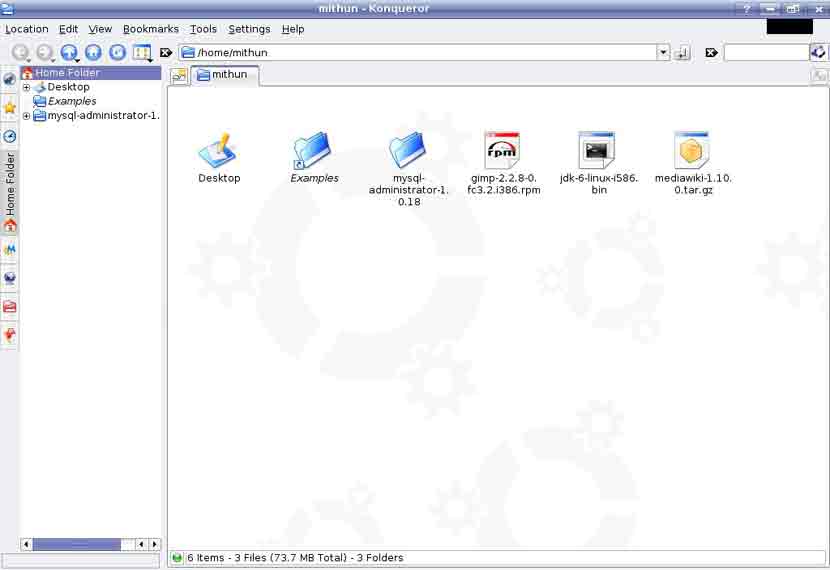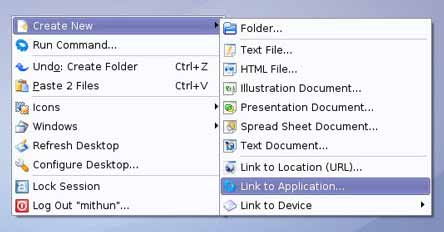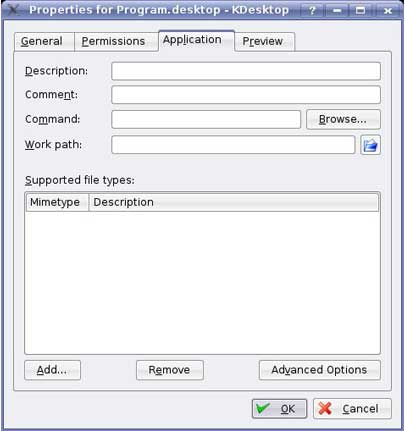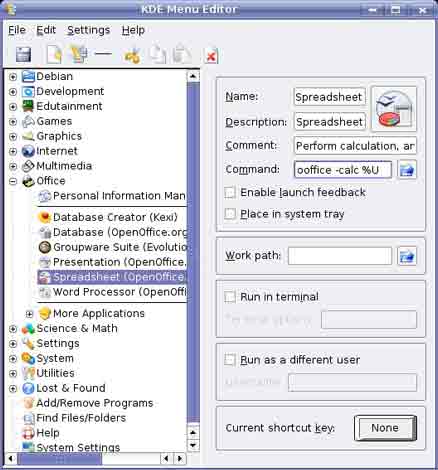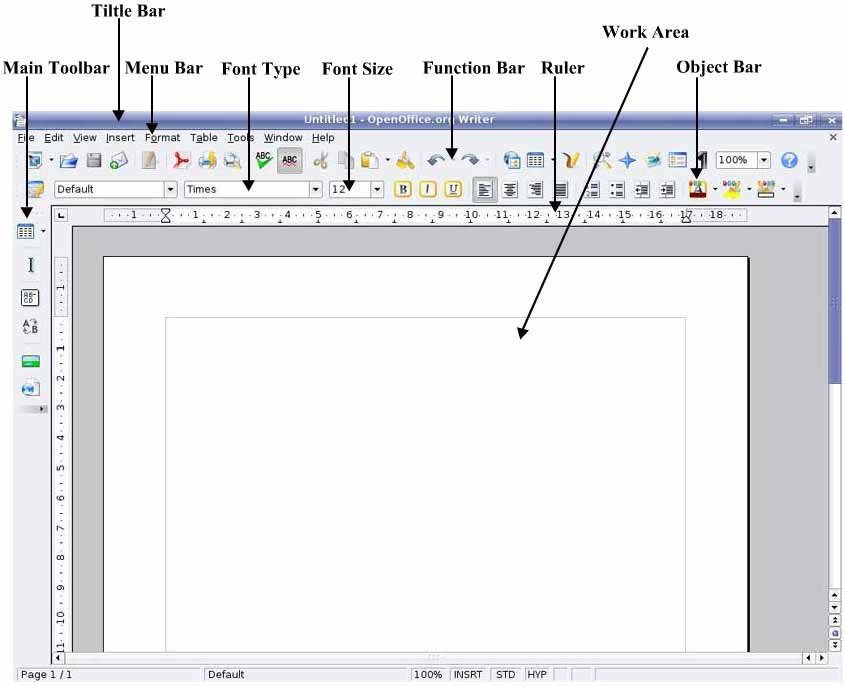CCNC/CCNC Module 2/Subsection Level CCNC Template1
Contents
Terminology
GUI(Graphical User Interface)
A GUI is a system that allows the user to interact with the operating system through clicking on icons on the screen. Icons are graphical representations of operating system functions. At its heart, Linux is a text based system. This requires you to type commands out in full. GUIs were developed to simplify the use of Linux for the desktop user. As you become expert in the use of Linux, you will need to become familiar with the text based system. This is not, however, the objective of these notes.
Distributions
A distribution is a bundled set of CDs which include the heart of the Linux operating system, known as the kernel, together with a set of applications. Each distribution in turn implements Linux slightly differently.
Desktop
The desktop is the actual GUI itself. There are a number of different desktop systems. The most popular are Gnome and KDE. The actual implementation of a desktop varies from distribution to distribution. KDE used with the Ubuntu distribution will differ somewhat from when used with the Red Hat distribution. These notes are based on KDE running under Ubuntu Linux 7.04
Work with Icons
The following screen illustrates a number of icons on the desktop.
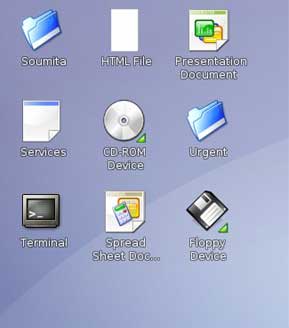
CD-ROM Device and Floppy Device give you direct access to these devices.
Directories (folders) are presented by a directory icon as illustrated by Urgent.
Home is a shortcut to your home directory. When new users are added to the system, Linux creates home directories for them. As users do not have rights to other users' directories, the home directory provide a private location for the storage of files. The one exception is root who has complete access to the system.
Trash is a storage location where files are placed after they have been deleted. If trash has not been emptied, you can recover files you have deleted.
There are also desktop icons representing applications such as a Presentation or spreadsheet application.
Files can also be saved to the desktop. The desktop is a useful place to save work in progress as you then have immediate access. Files are represented by an appropriate application icon.
Select and move desktop icons
You can move icons to a different position on the screen by dragging them. This allows you to group related icons in clusters.
1. Click on a icon to select it.
2. Hold down the left mouse button and drag the icon to its new position.
3. Release the left mouse button.
Open a file, directory/folder, application from the desktop
Open a directory from the desktop
A directory is a location in which files are stored. You may visualize a directory as a drawer of a filing cabinet in which ordinary files are stored. Just as you would label the drawers of a filing cabinet, you give each directory an appropriate name. In many ways a hard disk drive is very much like a room containing many filing cabinets.
A directory may contain files of any type. It may also contain other directories. Directories which are located inside other directories are called sub-directories.
• Click on System Menu then select Home. This will open the Konqueror browser and display the contents of your home directory.
Notice that this directory contains a number of files and other directories.
Open an application from the desktop • Double click on an application icon on the desktop such as the icon representing OpenOffice.org.
This will open the application and you will then have to use the application's Open command to access the file.
A shorter method would be to double click on a file associated with an application which will open the file in the appropriate application.
Create a desktop shortcut icon, desktop menu alias
Save a file to the desktop
Suppose you are working on a file in Word Processor called Details.odt and you wish to save it to the desktop.
1. Go to, File->Save (Save as).
2. Select the sub-directory called Desktop in your home directory.
3. Click OK.
Create a shortcut to a menu item
Suppose you use Word Processor on a regular basis. Instead of accessing them through the menu system, you can place shortcut icons on the desktop.
1. Right click anywhere on the desktop.
2. Create New->Link to Application
3. Click the General tab and enter the label Writer.
4. Click the Application tab and enter the description as Word Processor and command oooffice-writer%U
5. Click OK.
An icon will be displayed on the desktop. In order to use this method you need to know what command to use to run the application. How to determine this is explained in the following section.
6. Double click on the desktop icon to run the application.
Determine the command name of an application
Suppose you wish to determine the command to run Calc.
1. Right click on the Start Applications icon.
2. Click Menu Editor.
3. Scroll down to the Office entry and click on it to expand.
4. Scroll down to the Spreadsheets and click
5. Read of the Command. In this case it is office-calc%U.
6. Use this command to create a shortcut icon to Calc on the desktop.
Create a desktop shortcut to the System Setting
The System Setting provides the main tool for configuring your desktop. Using the menu editor, you could determine the command to run the System Setting.
1. Right click on the desktop.
2. Create New->Link to Application
3. Click the General tab and System Setting, click on the KDE icon to select the icon.
4. Click on the Default icon to select appropriate icon.
5. Select an icon to be associated with the application and click OK.
6. Go to the desktop and double click on the new icon.
This will load the Ssytem Setting Window without having to access it through the menus.
Work with Windows
Identify the different parts of a window: title bar, menu bar, toolbar, status bar, scroll bar.
The following screen uses OpenOffice.org Writer to illustrate the main components of an application window.
The title bar is where you can see the name of the application that is open. In this case OpenOffice.org. You will notice in the screen above the words Untitled 1 appear before the name of the application. This means that there is an unsaved document open. Once the document has been saved and has been given a name then the name will appear instead of Untitled 1.
Collapse, expand, resize, move, close a window
The icons relating to these functions are located in the top right hand corner of the screen.
Collapse a window
1. The first is the Minimize button.
This collapses the current window and displays an icon with the application's name in the panel at the bottom of the screen.
2. To restore the application window, click on the application icon in the panel.
Close a window
Click the Close icon.
Resize a window
1. Click the Cascade windows icon.This displays the window so that it only occupies part of the screen.
2. Hover the mouse over one of the corners on the window.
This will display a resize handle.
3. Hold down the left mouse button and drag the corner to resize the window.
4. Release the mouse button when you have the desired size for the window.
5. Hover the mouse over one of the sides of the window.
This will also display a resize handle. However these handles limit your movement either vertically or horizontally.
Move a window
1. Click and hold down the left mouse button on the Title of the window. This is the blue area in the left hand top corner of the window.
2. Drag the window to the new position.
3. Release the mouse button.
Maximise a window
Click the Maximize window icon. This icon will only be available if the window has been cascaded.
You cannot resize or move a window that has been maximized.
Switch between open windows
Where you have multiple open windows, each will be displayed as an icon on the panel at the bottom of the screen. Each icon will have a title. Usually the title is too long to be displayed in full.
1. Hover the mouse over the icon to display the full title.
2. Click on an icon to switch to that application.
Where there are several windows open at once, KDE will try to list these. In the above screen, GIMP has four windows associated with it.
3. Click on the icon containing the window you wish to open.
Open another desktop
KDE goes one step further. You may open up to four different desktops at the same time. In each of these you may be doing a completely different type of work. The different desktops are also accessed from the panel.
• Click the Desktop 2 icon to display a completely fresh desktop.You can operate in this desktop independently of what you are doing in desktop 1.
The icons for open applications will be displayed in the panel irrespective of the desktop you are currently working in. If you click on one of these, you will automatically be taken to the desktop in which the window is open.
